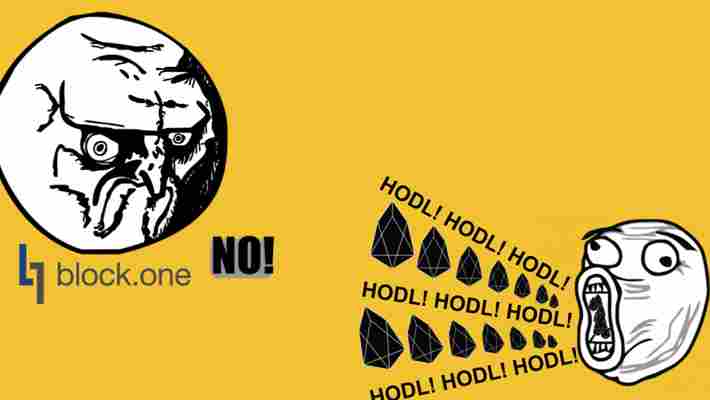A consortium backed by major Chinese corporations Tencent and Huawei will debut its new open source “blockchain ecosystem” FISCO BCOS at the Singapore Fintech Festival next month.

BCOS is geared towards providing enterprise-grade distributed ledger (DLT) solutions. Much like the open-source Hyperledger Fabric , its completely coinless.
This makes BCOS more of a set application templates geared towards businesses looking to adopt DLTs than a single ‘traditional’ blockchain.
Behind the new platform is China’s Financial Blockchain Shenzhen Consortium (FISCO) task force, which features more than 100 members, spearheaded by major financial players like WeBank, Tencent Cloud, and Shenzhen Securities Communication.
While the press release gives many technical details of the system, including claims it can process 1,000 transactions per second, many will be quick to notice some incredible similarities between the tech powering BCOS and some other major blockchain ecosystems, particularly “Byzantine fault tolerance” and “ zero-knowledge proofs .”
But the whole thing seems ultimately geared towards remaining compliant with Chinese regulations .
Perhaps it’s of little surprise that FISCO built BCOS in such a way that it allows regulators and auditors to access and monitor the real-time data flow through special “observatory” nodes.
“ FISCO BCOS is the first blockchain platform built specifically to meet the regulatory requirements and service demands of the financial industry [in China],” reads the release.
It also claims that many applications have already been launched on the platform since it became open source, purportedly related to supply chains, finance, tourism, copyright transactions, recruitment, and gaming.
Blockchain templates are big business
Similar blockchain ecosystems are being readily adopted by some of the biggest figures across multiple global industries, but some aren’t exactly open source.
R3’s Corda blockchain platform is being used by Thailand to create a national digital currency (but it’s just for banks).
IBM have one too. It’s a pre-packed version of the open source Hyperledger Fabric , and it’s been used for some of the biggest banks in the world to test blockchain’s suitability for international remittance transfers.
For all intents and purposes, Tencent, Huawei, and FISCO are positioning their new blockchain ecosystem as a direct competitor to platforms like these.
BCOS appears to have all the fixings of something like the Ethereum blockchain (just without the cryptocurrency) in addition to ultimately being backed by the might and power of Chinese mega-corporations.
Oof.
( EDIT: This piece has been updated to clarify a distincton between Ethereum and Hyperledger Fabric.)
Here’s why EOS will confiscate your tokens if you HODL for too long
If you are one of those people who love to buy cryptocurrency and forget about it for the next several years, then EOS might not be the one for you. It doesn’t want any of your HODLing .

Blockne — the company behind the EOS Network — has inscribed in the blockchain platform’s constitution that any EOS members who don’t put their tokens to use for three years could get their accounts terminated.
Such accounts will either be put up for auction or the amount held in inactive wallets will be distributed to the rest of the EOS token holders. The constitution says that redistribution will be done “according to the system contract provisions then in effect” for such event.
This is what the current draft reads about HODLing:
So why would EOS have a problem with holding given how popular the HODL strategy is these days? We spoke to Rick Schlesinger, co-founder of EOS New York – a leading block producer candidate for the network – who offered some insight into the controversial Article XV.
According to Schlesinger, the reason is to ensure the platform does not deviate from its intended utility:
But here is the problem with this explanation: Blockne ran a year-long initial coin offering (ICO) for EOS and distributed tokens to practically anyone interested in buying them. Indeed, many of the people who invested in EOS cryptocurrency are enthusiasts looking to score a profit – and not developers seeking to build on top of EOS.
Schlesinger says that, while he can’t answer for Blockne, actively participating in the EOS ecosystem will be crucial to the success of the platform and this is precisely why the current version of the constitution is discouraging users from idly holding on to their investments.
“ Regardless of the outcome of Article XV, we will be encouraging active participation in the EOS community regardless of whether or not someone is a software developer,” Schlesinger told Hard Fork. “Even if someone can just re-vote for a BPC or on a Worker Proposal once every three years that would completely negate any worry about Article XV.”
As Schlesinger also notes, the article does permit holding the coins long term as long as the wallets are performing some actions. So technically, you can HODL your EOS as long as you make at least one transaction (no matter how small) once in every three years.
In any case, Schlesinger points out that the constitution is not yet final and the clause in question might be subject to change. This is just a draft by the Blockne team, and the constitution could be amended by the community in the future.
The fact that the community can revise the constitution at will means it could go through frequent changes, at least initially. Schlesinger notes that it ultimately depends upon what the majority wants. The community can bring a change to the constitution on whatever grounds they deem appropriate.
Schlesinger told Hard Fork that anyone who holds an EOS account with tokens is a part of this community and can call for a referendum. But, he further suggests that the opinions of influencers like Blockne CTO Daniel Lanimer could have significant impact on the way stakeholders vote.
Influencer impact aside, Schlesinger explains that the voting influence will ultimately depend on the amount of EOS voters hold – the fatter your wallet is, the bigger impact you have on voting.
He further argued that the EOS token is widely distributed , but a recent report by Trustnodes suggested almost 50 percent of all tokens are held by a total of 10 wallets. This clearly raises some doubts over how fair or democratic the voting procedures with EOS will be.
For the record, the largest holder is Blockne with 100 million EOS tokens – a staggering 10 percent of the total supply.
Over the past days, EOS has received criticism for the delay in the launch of its mainnet, its poorly drafted constitution, and the string of vulnerabilities in its blockchain.
Indeed, even though the blockchain finally launched on Sunday, it is not yet live — pending the election of block producers.
Update 19:00 UTC, June 12: Schlesinger has since clarified that his sentiment is that the EOS community should actively challenge the constitution and any controversial stipulations it includes.
“ I do think the community is going to scrutinize [Article XV] closely (as they should),” said in an email to Hard Fork. “ This is why we’re here – to experiment with this nascent technology and learn about how a governed blockchain can respond to the community’s will.”
He has further downplayed the accuracy of Trustnodes’ token distribution report, arguing the publication failed to factor out the wallets of exchange desks from the calculations.
“The key misstep Trustnodes and others have done is that they’re aggregating the exchange wallets which account for many thousands of individual accounts,” Schlesinger told Hard Fork. “If you do not extract these accounts the analysis will be incomplete: garbage in, garbage out.”











